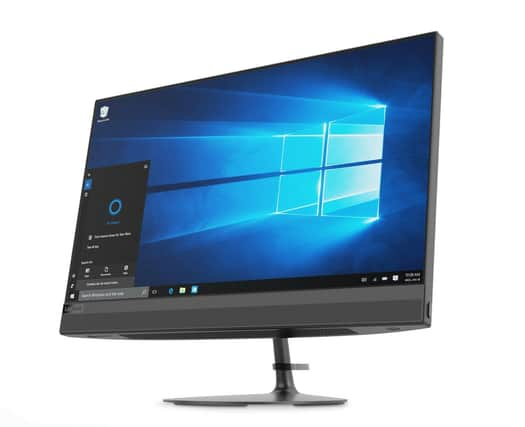Why buy an all-in-one PC when you can assemble your own?


But a big PC need not mean a lumbering tin box under your feet with two platefuls of spaghetti hanging out of the back. An all-in-one computer combines the main unit and monitor in a single box – or more accurately, two boxes fixed together. It takes up no more room on your desk than a normal screen and keyboard, and when you want to it away, or move it to another room, you can pick it up with one hand.
The big computer manufacturers – Lenovo, Dell, HP and others – have long made all-in-one machines but they’re expensive and hard to upgrade. A smarter way to achieve the same effect is to make use of the kit you already have.
Advertisement
Hide AdAdvertisement
Hide AdIf you already have a laptop, whether your own or the firm’s, it’s easy enough to connect an external screen, mouse and keyboard. The laptop itself can then be tucked under your desk and used as a full PC. All modern laptops can accommodate at least one extra screen, so all you need is a cable with the right connectors at each end. These are available for just a few pounds online.
But if you want a more bespoke solution, why not build your own all-in-one? This is easier than you think, because even some of the branded solutions consist of little more than a monitor with a small PC bolted on to the back. It takes only an Allen key to do that yourself.
You will need a screen, preferably one you already own, and one of the many mini-PCs now on the market. These are scaled down Windows machines stripped of all but the essential components but nevertheless capable enough to be day-to-day workhorses. They typically come in rectangular or cube-like boxes roughly the size of a paperback book and not much heavier, and include a mounting plate that screws to the back of the screen. Once installed, it is distinguishable from a branded all-in-one only by the presence of two mains cables instead of one.
Mini-PCs themselves range from the super cheap to Apple’s Mac Mini range, which starts at around £700. In between, there are almost as many variants as with normal-sized PCs. At the bottom end of the market, a no-name unit with a low-powered Intel Atom processor, four gigabytes of memory and 64GB of storage can be had for £125, but it will struggle with all but the most basic tasks. A more sensible, mid-range option is the £280 Beelink U57, which has a fifth-generation Intel Core i5 processor, 8GB of memory, a silent 256GB hard drive and Windows 10 preinstalled.
Advertisement
Hide AdAdvertisement
Hide AdWhat you won’t find on a mini-PC is a dedicated graphics card, so they’re not ideal for playing games. And even though they tend to be fitted with low-noise fans, you may still notice the sound more than on a regular computer, since it’s closer to your face. Units with the most basic processors don’t need fans but the more powerful they become, the more they need cooling down.
Nor does this arrangement accommodate a printer, the final piece of the traditional home PC jigsaw. But remote working has made printers even more passé than they had already become, and many people find they can manage quite happily without one. If you insist on keeping one, a wireless model can sit independently somewhere else in the house. Even if home working is here to stay, keeping the technology in its proper place is easier than ever.
Support The Yorkshire Post and become a subscriber today. Your subscription will help us to continue to bring quality news to the people of Yorkshire. In return, you’ll see fewer ads on site, get free access to our app and receive exclusive members-only offers. Click here to subscribe.
Comment Guidelines
National World encourages reader discussion on our stories. User feedback, insights and back-and-forth exchanges add a rich layer of context to reporting. Please review our Community Guidelines before commenting.